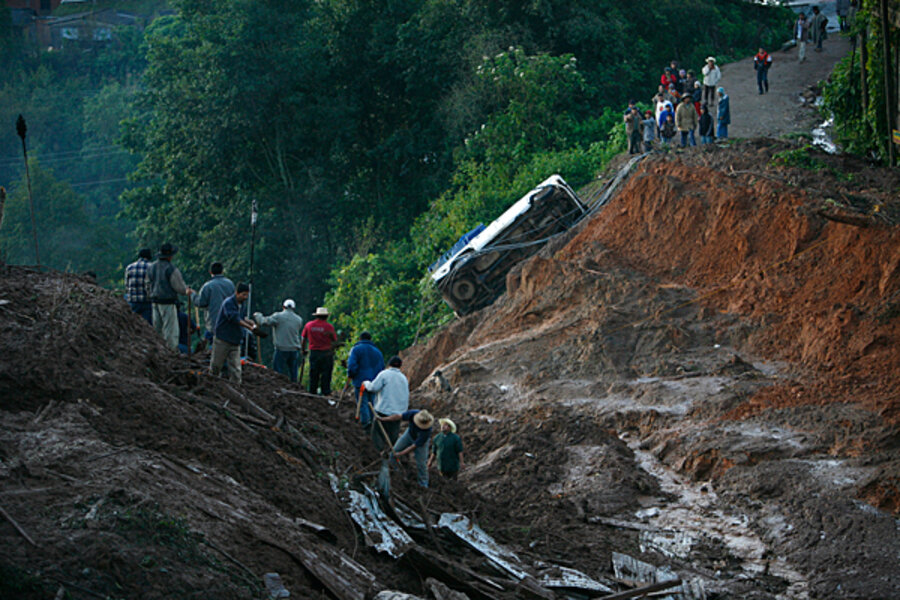Mexico landslide: Dire predictions prove to be false alarm
| Mexico City
Panicked villagers in the southern state of Oaxaca, Mexico, awoke to a large crashing noise in the early hours of Tuesday – the sound of a hillside collapsing around them. One man in the remote mountainous indigenous community managed to contact state civil protection units via satellite phone.
Mexicans awoke hours later with news that up to 1,000 could have died, and the government mobilized the military, the police, and firefighters to aid in the enormous rescue effort ahead. By noon, however, the estimates had been dramatically reduced. There were 100 missing and 7 confirmed deaths and no explanation for the discrepancies, so they were simply reported as such.
By evening, when the governor of Oaxaca and Mexico's Interior Ministry called a press conference, there were no confirmed deaths and 11 missing.
These numbers could still change, especially as the landslide has made stretches of the state impassable and continuing rains has stymied the rescue effort.
But the dire predictions, which garnered worldwide news coverage for most of the day and into the evening yesterday, have given way to headlines about tragedy averted and deadly landslide not being fatal after all.
“False alarm generates national emergency,” reads the front-page headline today in El Universal, a Mexican daily.
It is a cautionary tale about the instantaneous nature of news, where consumers want information immediately. Even in a world of Twitter and instant messaging, mechanisms that have helped in numerous tragedies – such as in the Haiti earthquake when people buried under rubble texted family to alert them of their whereabouts – this proved to be a case in which only time revealed the truth.
The news that reached state and federal officials in Mexico from Santa Maria Tlahuitoltepec early yesterday morning was that a landslide had buried up to 300 homes. There was no way to verify that, the governor of Oaxaca, Ulises Ruiz, said during a press conference last night.
“At this hour, without light, without communication, what we did was mobilize,” he said to a reporter last night who asked how a national tragedy had turned into an event unlike the landslides and flooding taking place in the rest of southern Mexico, parts of Central America, and even Colombia after torrential rains this season.
“We could not speculate what was happening, so the federal government, the state government, and the nearby municipalities mobilized all of their teams,” said Mr. Ruiz.
It was not until hundreds of firefighters and rescue workers were able to access the town, cut off due to the blocked roads and dense rain and fog, that the scale of the tragedy was put into perspective.
“Fortunately, the situation is not what was said, but at 4 a.m. we could not do anything else, coming up against trying to ascertain if it was certain or not,” Ruiz said. “I repeat, how great that it was not certain.”
Weather continues to threaten towns in the region, and relocations are reportedly taking place as unstable soil could provoke more landslides. But for now, and for once, it seems, Mexico can let out a collective sigh of relief.





